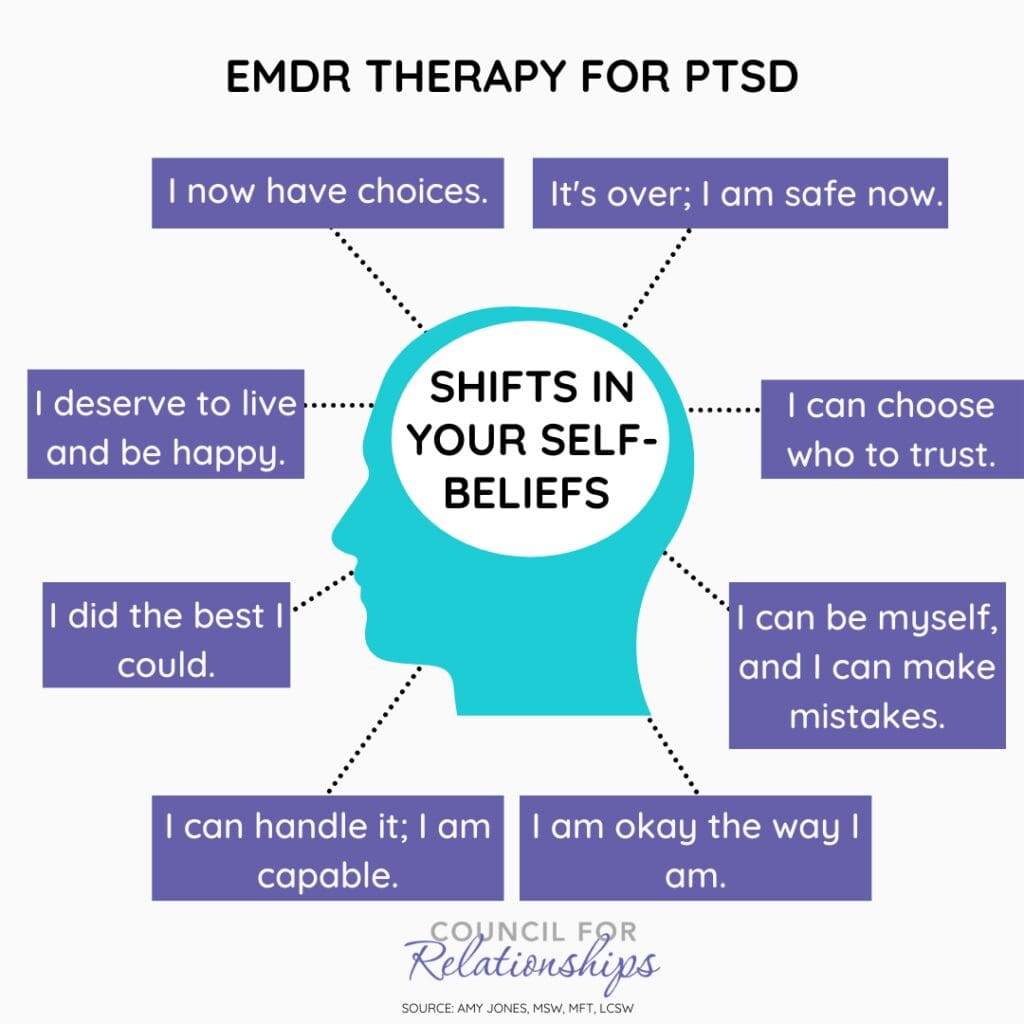Exactly How EMDR Treatment Works: a Thorough Look at the Process and Its Effectiveness
EMDR treatment has arised as a prominent treatment for trauma-related disorders. Its structured technique includes various stages developed to promote the handling of stressful memories. Central to this approach is the concept of bilateral excitement, which plays a crucial role in how memories are refined. Understanding these elements exposes much about the treatment's efficiency. What specifically happens throughout an EMDR session, and exactly how does it impact the healing journey?
Understanding the Concepts of EMDR Therapy
EMDR treatment, or Eye Activity Desensitization and Reprocessing, operates the facility that unsolved distressing experiences can impede emotional wellness. This cutting-edge therapeutic approach intends to help with the processing of traumatic memories, allowing individuals to acquire a healthier perspective on their past. Central to EMDR is the principle of reciprocal stimulation, commonly accomplished through directed eye motions, which is thought to aid incorporate terrible memories right into an extra adaptive framework.

The Eight Phases of EMDR Therapy
The process of EMDR therapy unfolds over eight distinctive stages, each made to assist customers via a structured technique to healing trauma. The very first phase involves history-taking, where the specialist examines the client's background and recognizes target memories. In the second stage, clients find out leisure techniques to take care of distress. The third stage concentrates on identifying adverse beliefs related to the stressful memory.
The 4th phase is where the desensitization process starts, allowing clients to process the distressing memory. The fifth phase includes setting up positive ideas to change the unfavorable ones. In the sixth stage, clients are directed to evaluate their physical and psychological feedbacks to the refined memory. The 7th phase stresses closure, assisting clients go back to a state of balance. Finally, the eighth stage includes reevaluation, where specialists and clients review development and deal with any type of recurring distress. This extensive technique promotes a path to recovery and resilience.
The Role of Bilateral Excitement
Bilateral excitement is an important part of EMDR treatment, promoting the handling of traumatic memories. This method entails alternating stimulation of both hemispheres of the mind, generally attained through eye motions, acoustic tones, or tactile feelings. The objective of bilateral excitement is to engage the brain's all-natural information handling system, which might end up being interrupted adhering to injury.
By activating both sides of the brain, reciprocal excitement assists clients access and recycle traumatic memories in a more flexible way. This method motivates the combination of traumatic experiences, decreasing their emotional charge and enabling customers to create brand-new perspectives.

In addition, bilateral excitement may promote leisure and reduce stress and anxiety during sessions, creating a safer setting for clients to face excruciating memories. Eventually, this technique enhances the therapeutic process, allowing individuals to approach recovery and resolution.
Evidence Sustaining the Performance of EMDR
Research has actually shown that EMDR treatment works in treating numerous emotional conditions, especially trauma (PTSD) Countless research studies have actually demonstrated considerable reductions in PTSD signs following EMDR therapy. A meta-analysis of randomized controlled trials discovered that EMDR was as effective as cognitive behavioral therapy check (CBT) for PTSD, with enduring impacts observed also months after therapy. In addition, the American Psychological Organization and the World Health Company endorse EMDR as an advised treatment for trauma-related conditions.
Past PTSD, research shows that EMDR can also benefit individuals struggling with anxiousness, anxiety, and phobias. An expanding body of evidence supports its use in diverse populations, consisting of veterans and kids - emdr therapy new york. Overall, the collecting research study emphasizes EMDR's possible as a flexible therapeutic option, leading the way for additional exploration right into its mechanisms and applications in psychological health treatment
What to Expect Throughout an EMDR Session
Throughout an EMDR session, clients can anticipate a structured yet adaptable strategy focused on processing distressing memories. The specialist begins by developing a risk-free environment, where clients can really feel comfortable sharing their experiences. Initial discussions focus on determining certain memories and linked visit our website negative ideas.
Customers are assisted to focus on these memories while concurrently taking part in reciprocal stimulation, normally with assisted eye movements or tapping. This double emphasis aims to promote the processing of the injury, enabling clients to reframe their experiences and lower emotional distress.
Throughout the session, therapists keep track of clients' actions, readjusting the pace and strategy as needed. Procedure might consist of relaxation methods or cognitive restructuring to strengthen positive ideas. Overall, clients Continue can anticipate an encouraging environment that encourages self-exploration and recovery, ultimately resulting in a greater sense of psychological wellness.
Often Asked Inquiries
Is EMDR Therapy Appropriate for Kid or Adolescents?
EMDR therapy can be appropriate for teenagers and kids, provided it is adjusted to their developing requirements (emdr therapy new york city). Clinicians typically customize strategies to assure safety and performance, supporting younger populations in handling injury and emotional distress
For How Long Does EMDR Treatment Typically Last?
EMDR treatment typically lasts in between 8 to 12 sessions, with each session varying from 60 to 90 minutes. Individual requirements and the complexity of trauma can affect the total duration of treatment.
Can EMDR Therapy Be Done From Another Location or Online?
EMDR therapy can without a doubt be carried out remotely or online. Several practitioners have actually adapted their methods to digital environments, enabling customers to involve in efficient sessions from the convenience of their homes, preserving restorative advantages.
What Are the Prospective Side Results of EMDR?
Possible negative effects of EMDR therapy might consist of momentary emotional distress, enhanced anxiousness, dazzling memories, and physical pain. Individuals may also experience exhaustion or frustrations complying with sessions, as the mind refines intense sensations and memories.
Exactly How Does EMDR Compare to Conventional Talk Therapy?

EMDR therapy, or Eye Movement Desensitization and Reprocessing, runs on the premise that unresolved traumatic experiences can impede emotional well-being. The procedure of EMDR treatment unfolds over eight distinctive stages, each designed to assist customers through a structured approach to healing injury. Reciprocal excitement is a crucial component of EMDR treatment, assisting in the handling of traumatic memories. Throughout an EMDR session, customers can anticipate an organized yet flexible technique aimed at processing distressing memories. Possible side results of EMDR treatment may consist of momentary emotional distress, heightened anxiousness, brilliant memories, and physical discomfort.